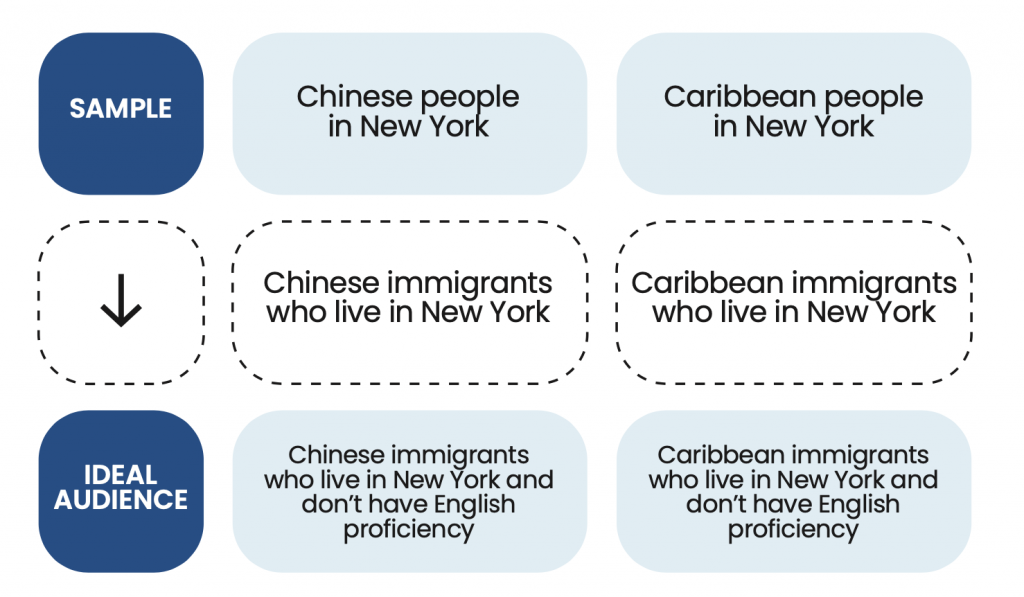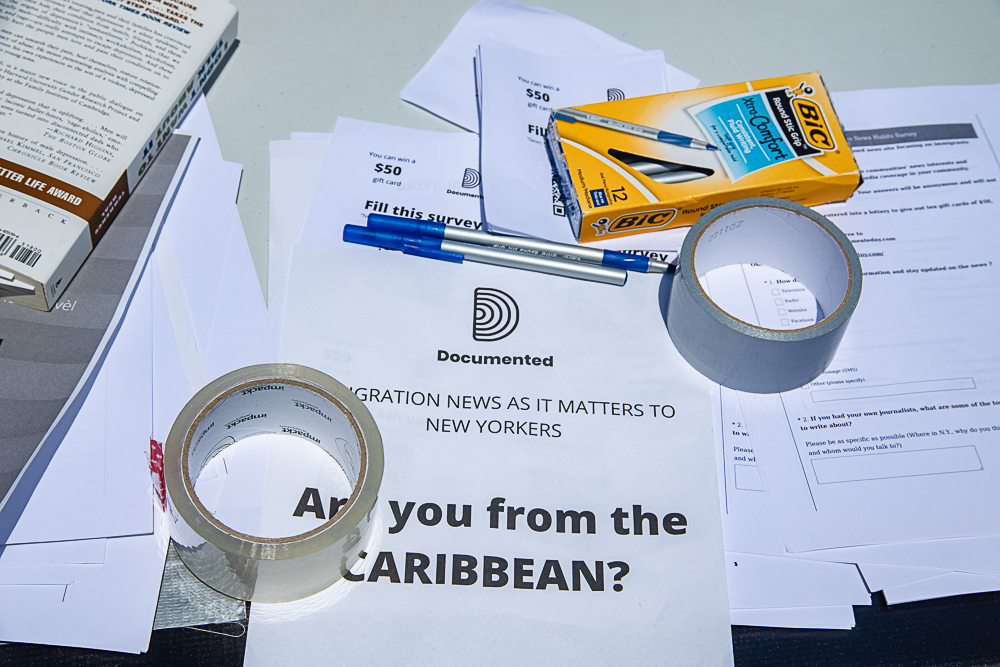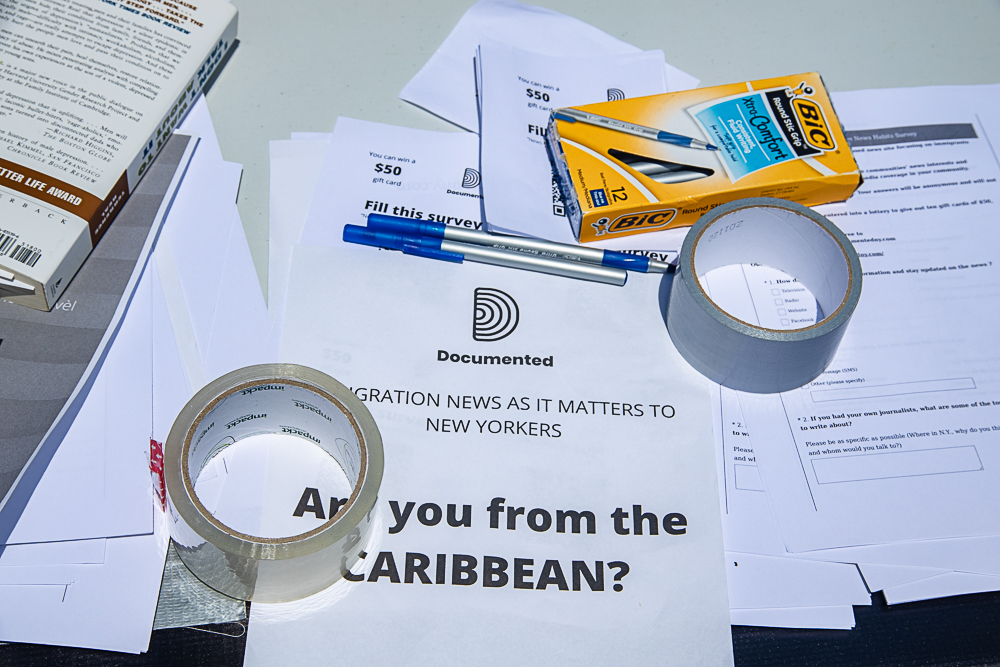There are over 3.1 million immigrants who live in New York, and Documented is a newsroom of fewer than 15 people with the goal of creating immigrant-centric news. We knew we wanted to publish multilingual journalism to reach multiple immigrant communities. But, we had to do the research to find out who our potential readers could be and what their thoughts are about local media.
To be most effective, we had to narrow our goals to a specific immigrant group. Then we analyzed public data to ensure our research wasn’t duplicative. We worked with community groups to design, test and distribute our surveys. After collecting and analyzing the responses, we dug down on key themes by hosting focus groups and one-on-one interviews.
Altogether, we spoke with over 1,000 local immigrants and now we understand how to reach these new communities and what they want to know about life in New York. We are sharing our research methodology with others to alleviate the barriers faced by these communities and support other groups as they pursue audience research.
Understand the sample you want to research on
As we prepared to expand our coverage to reach beyond Spanish-speaking Latino immigrants, we had to clarify our intended audience.
We learned the second and third largest immigrant communities in New York are Chinese immigrants and, combined, people from the countries of the Caribbean region that are not primarily Spanish speaking. But, no one had yet done a news assessment survey of these immigrant groups. So, we spent a year researching these communities.
First of all, we asked: who are we going to serve? Is it Chinese immigrants or Chinese immigrants that live in New York? There are 13 countries that make up the Caribbean region. Where should we focus our attention? We funneled that prospective audience over and over until we had a clear plan.

Once we narrowed our audience and surveyed publicly available data, we refined a survey that would uncover their information and news consumption habits, their needs in everyday life, and their needs related to news coverage and specifically immigration news.
Be mindful of the tech
Documented is a digital-first news source. We primarily publish on our website, documentedny.com, our newsletter for immigration professionals Early Arrival and in our WhatsApp community of Latino immigrants, most of whom are undocumented.
But, we haven’t yet built an audience of Chinese and Caribbean immigrants. So, to connect with these groups, we had to go to where they are – both online and offline.
We leveraged existing community pathways and sent our surveys to 54 local organizations that work with immigrants. They helped us design the survey and sent the collaborative version to their network, which helped us garner responses and build trust with the community.
We published versions of the SurveyMonkey questionnaires in English, Chinese and Haitian Creole. To reach out to as many Caribbeans as possible, we launched a Facebook campaign that targeted ZIP codes where publicly available data showed large numbers of Caribbean immigrants were living. We also leveraged WeChat to distribute the Chinese survey to Chinese immigrants.

To reach immigrants who are not actively online, we printed cards with QR codes leading to the survey in different languages and distributed them, as well as printed versions of our questionnaires, to nonprofit organizations and at community events. Overall, the Documented team attended 24 community events during the research phase.
We designed the survey to have several open-ended questions. This required more hours of analysis, and we had to hire additional people to help us sort through over 900 written responses. But, this also enabled us to tap into themes that we brought to light in the second round of our research, which used focus groups and one-on-one interviews.
Challenges with survey responses
We advertised that survey participants would be entered in a raffle to earn a gift card. To increase their chances of winning, people stuffed the Caribbean survey with multiple responses. We were able to isolate these by studying the IP addresses of submissions.
We noticed that the open-ended questions were sometimes hard for people with low literacy levels to answer.
It was difficult to get smaller groups within the broader Chinese and Caribbean communities to participate in this research. Many immigrants said they were reluctant to respond for fear of jeopardizing their immigration status. Young immigrants were mainly not interested in participating in the survey, and they are typically not as reliant on nonprofit community organizations so they were more difficult to reach.
Our survey of Caribbean immigrants had a higher margin of error because the sample size was smaller.

Immigrant news findings
Overall, we interviewed 946 Chinese immigrants and 191 Caribbean immigrants. We combined our two rounds of research with existing data from census reports and other public findings to create a holistic picture of the news habits of these immigrant groups.
TestPost3
Some key findings from our original research include:
- 85% of Chinese New Yorkers who participated said they have seen information that they suspected to be false information or fake news when using social media like WeChat or Facebook.
- 77% of Chinese respondents don’t see themselves well represented in the news.
- 87% of Chinese respondents mention feeling “worried about the public safety in NYC” or feeling “unsafe” or that it is “dangerous” living in the city.
- 57% of Caribbean respondents said that the current media coverage is “too negative”
- 70% of Caribbean respondents use the apps “Nextdoor” or “Citizen” as a source for local news
These insights will inform news products we launch that will be designed specifically for Chinese and Caribbean immigrant communities.
Also Read: 5 Reasons Why We Research Caribbean and Chinese Immigrants







